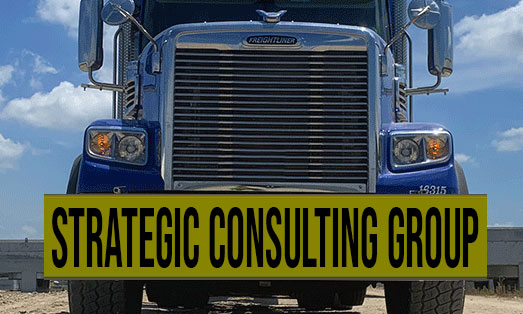Cost / Document Control: Managing budgets and project documentation. explained
Where to find Project Management near Salt Lake County?
Mastering Money and Documents: A Guide to Cost Control and Document Management for Seamless Projects
Unleash Efficiency with Cost and Document Control
In the realm of project management, financial and documentary oversight are crucial for success. This comprehensive guide will empower you with the strategies to keep your projects on track and achieve remarkable outcomes.
Embrace Fiscal Prudence: Budgeting Basics
Set Realistic Financial Boundaries
As the cornerstone of cost control, budgeting ensures you stay within your financial limits. Determine your project’s scope and identify required expenses, including materials, labor, and contingencies.
Define Expenditure Categories
Organize your expenses into clear categories, such as supplies, equipment, and travel. This systematic approach simplifies tracking and identifies potential areas for cost optimization.
Prioritize Essential Purchases
Focus your spending on items that are indispensable for project completion. By eliminating unnecessary expenses, you maximize your budget and ensure funds are allocated where they matter most.
Streamline Document Management
Organize with Diligence
Establish a cohesive filing system to categorize and store project documents. Create folders for contracts, invoices, correspondence, and technical drawings. Digital organization tools can further enhance efficiency.
Digitize for Accessibility
Convert paper documents into digital formats to streamline access and collaboration. Use cloud storage platforms or project management software to ensure all team members have instant access to essential information.
Utilize Technology to Your Advantage
Embrace Project Management Software
Project management software streamlines cost tracking and document management. Centralize project data, financial transactions, and document storage, providing a holistic view of your project’s progress.
Automate Repetitive Tasks
Leverage automation tools to minimize manual effort. Automate invoice processing, expense tracking, and document approval workflows, freeing up valuable time for more strategic tasks.
Stay on Top of Changes
Monitor and Adjust Proactively
Regularly review your budget and adjust as needed to accommodate unforeseen expenses or changes in project scope. Proactive monitoring ensures you stay on track and avoid financial surprises.
Communicate Regularly
Communicate financial and documentary updates to stakeholders and team members. Transparency fosters trust and ensures everyone is aligned on project goals.
By implementing these strategies, you can transform your project from a potential financial disaster to a resounding success. Master the art of cost and document control, and witness your projects soar to new heights of efficiency and productivity.
Mastering the Money and the Paperwork: A Guide to Cost & Document Control for Your Projects
TL;DR – Too Long; Didn’t Read
This article is about keeping track of your project money and documents. It’s like a roadmap to make sure you don’t overspend and that you have all the important information organized. We’ll look at how to create a budget, keep your paperwork in order, and use technology to make everything easier.
Why is Cost & Document Control Important?
Imagine you’re building a giant Lego castle. You have a bunch of bricks, but you need to use them wisely, right? You also need to keep track of all the instructions so you can put it together properly.
That’s what Cost & Document Control is all about. It helps you:
- Stay on Budget: You want to make sure you don’t spend more money than you have on your project.
- Keep Track of Everything: You need to organize all the important documents for your project. Imagine losing those Lego instructions!
- Avoid Delays: By managing your money and paperwork well, you can avoid things slowing down your project.
Making a Plan for Your Money: Budgeting Basics
H3 – Setting Realistic Goals
First, you need to know how much money you have to spend. Think about the things you need to buy for your project (like materials, tools, and maybe even some snacks for the team). Then, make a list of how much each item will cost.
H3 – Tracking Your Spending
As you start buying things for your project, keep track of how much you’ve spent. This is like checking the number of bricks you’ve used in your Lego castle.
H3 – Staying Flexible
Things can change. Sometimes, your project might cost a little more than you expected. It’s important to be flexible and make adjustments to your budget. Just like adding extra bricks to your castle if you run out!
Controlling the Documents: A System for Success
H3 – Organization is Key
Think of a library. It has shelves to keep all the books organized, right? You need a system like that for your project documents.
H3 – Digital Solutions
You can use software like folders on your computer or apps on your phone to keep everything organized. This is like having digital shelves!
H3 – Sharing Information
Make sure everyone on your project team can access the documents they need. This is like having a library where everyone can find the books they need to build their Lego castle.
Technology to the Rescue!
H3 – Software Solutions
There are programs that can help you manage your budget and documents. These programs are like digital assistants for your project!
H3 – Collaboration Tools
Many programs allow you to share information with your team. This helps you stay on the same page and avoid confusion.
Cost & Document Control in Action
H3 – Salt Lake County Example
In Salt Lake County, they use Cost & Document Control to manage all sorts of projects, like building new parks or fixing roads. It helps them use money wisely and keep track of all the paperwork.
H3 – Benefits
Cost & Document Control helps projects stay on track, use money wisely, and make sure everyone has the information they need. It’s like having a team of helpers working behind the scenes!
Summary
Cost & Document Control is like having a secret weapon for your projects. It helps you manage your money, keep your paperwork organized, and work efficiently. By creating a budget, organizing your documents, and using technology to your advantage, you can keep your projects on track and make sure they’re a success.


